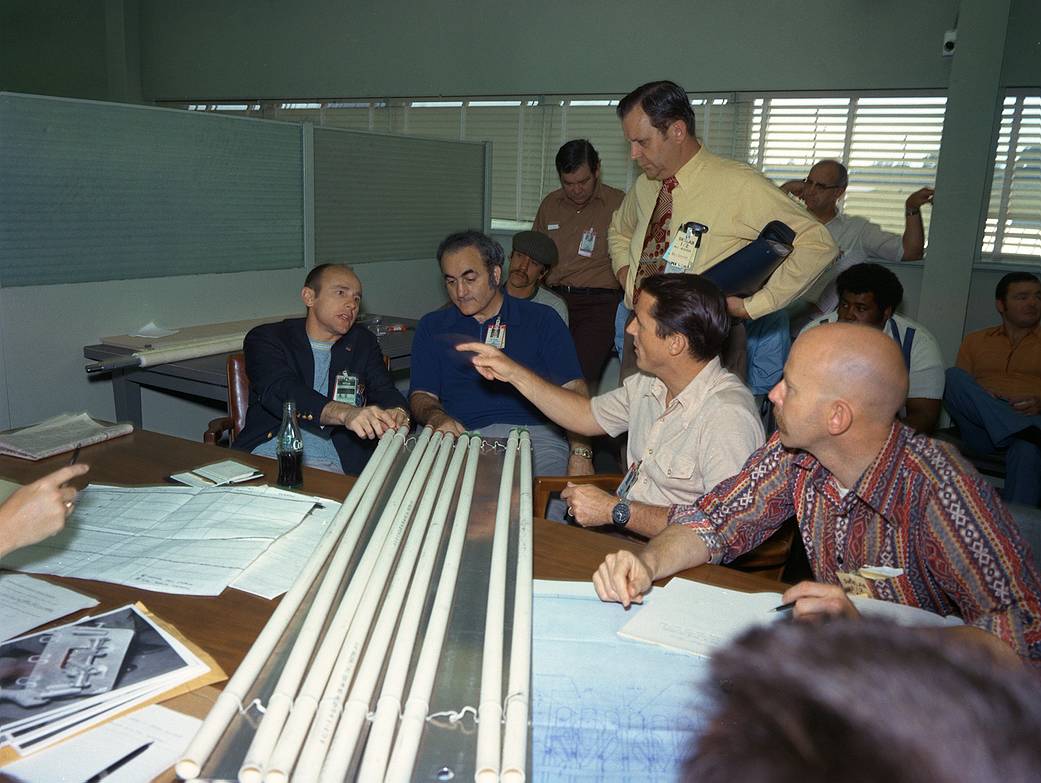
Soon after the launch of Skylab on May 14, 1973, engineers in the operation support and control center began receiving signals indicating problems had occurred with one solar array and the micrometeoroid shield. The station’s power supply was diminished and temperatures within the still unoccupied Skylab soared, rendering the station uninhabitable, threatening foods, medicines, films, and experiments. NASA delayed the launch of the first manned Skylab (Skylab-2) mission until methods were devised to repair and salvage the workshop. Working around the clock for a solution, engineers at the Marshall Space Flight Center in Huntsville, Ala. developed, tested, rehearsed, and approved three repair options including a parasol sunshade and a twin-pole sunshade to restore the temperature inside the workshop, and a set of metal cutting tools to free the jammed solar panel.
This photograph was taken during a discussion of the methods of the twin-pole Sun shield by (left to right) Astronaut Alan Bean, Marshall Center Director Dr. Rocco Petrone, Astronaut Edward Gibson, and Marshall engineer Richard Heckman. Dr. William Lucas, who became Marshall Director after Dr. Petrone left MSFC in March of 1974, is standing.
Image credit: NASA/MSFC


























